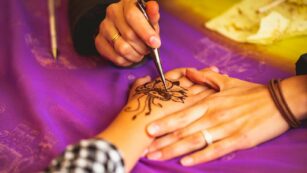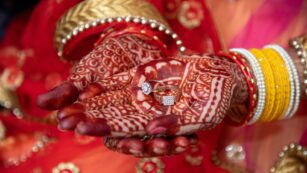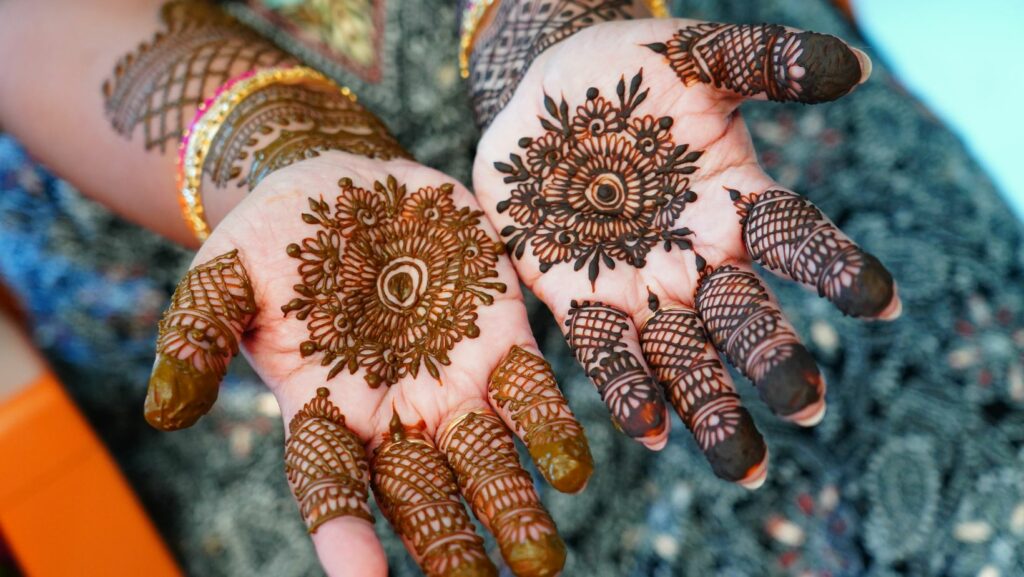Mehndi design tattoos have been a timeless form of body art that transcends cultures and generations. These intricate and mesmerizing patterns, also known as henna tattoos, have boost the bodies of individuals during celebrations, weddings, and festivals for centuries. Despite the rise of AI and learning machines, henna art has kept it’s most traditional roots. The top essential skills of applying mehndi designs is not just about aesthetics; it carries deep cultural significance and symbolism, making it a cherished tradition in many parts of the world.
From delicate floral motifs to elaborate geometric patterns, mehndi design tattoos offer a unique way to express creativity and individuality. Whether it’s a simple design on the hand or an elaborate full-arm masterpiece, each mehndi tattoo tells a story and holds a special meaning for the wearer. Dive into the world of mehndi design tattoos to discover the beauty, history, and artistry behind these captivating body adornments.
Tattoo:gucrt8wakmi= Mehndi Design
Mehndi design tattoos, also known as henna tattoos, have a rich history rooted in cultural traditions. Here’s a closer look at the origins and evolution of these intricate body art forms.
Origins and Cultural Significance

Mehndi, or henna, has been used for body art for over 5,000 years in various cultures, including Indian, Pakistani, and Middle Eastern traditions. The paste, made from the crushed leaves of the henna plant, is applied to the skin in decorative patterns, signifying joy, beauty, and spiritual awakening. These designs are commonly seen during weddings, festivals, and other celebratory occasions as a symbol of good luck and positivity.
Evolution Through the Ages
Over the centuries, mehndi design tattoos have evolved from simple patterns to intricate and elaborate designs. Initially used for decorative purposes, they have become a popular form of self-expression and creativity. From traditional motifs like paisleys and flowers to modern interpretations featuring geometric shapes and abstract patterns, the art of mehndi design tattoos continues to evolve, reflecting changing aesthetics and cultural influences.
Key Elements of Mehndi Design Tattoos
Common Motifs and Symbols

- Florals: Blossoms like roses, lotuses, and jasmine are popular motifs symbolizing beauty, love, and prosperity.
- Peacock: The peacock symbolizes grace, beauty, and elegance in Mehndi designs.
- Paisleys: Paisley patterns are commonly used to represent fertility, harvest, and abundance.
- Mandala: Mandala designs, intricate circular patterns, symbolize unity, wholeness, and the cosmos.
- Red: Signifies joy, celebration, and love; prominently used for bridal Mehndi designs.
- Orange: Represents success, transformation, and spirituality; often a favorite for festive occasions.
- Brown: Symbolizes stability, earthiness, and simplicity; a traditional color for Mehndi designs.
- Black: Associated with mystery, power, and elegance; used for bold, striking patterns in contemporary Mehndi art.
Caring for Your Mehndi Design Tattoo

Caring for your Mehndi design tattoo is crucial to maintain its longevity and vibrancy. Following the immediate aftercare tips and understanding how to prolong the life of your Mehndi tattoos are essential steps in preserving the beauty of this intricate body art.
Immediate Aftercare Tips
After getting a Mehndi design tattoo, it’s vital to take immediate steps to ensure its lasting impact. Here are some essential aftercare tips to follow:
-
- Avoid Water Contact: It’s recommended to avoid water contact for at least 6-8 hours after applying the Mehndi design to allow the color to develop fully.
- Seal the Design: Once the Mehndi paste has dried, apply a sugar and lemon sealant to enhance the color and increase longevity.
- Protect the Design: To prevent the design from fading quickly, avoid rubbing the area and protect it from excessive friction or contact with water.
- Keep the Skin Moisturized: Moisturizing the design area regularly with natural oils like coconut or almond oil helps retain the color and keep the skin hydrated.
Mehndi design tattoos have a rich history spanning over 5,000 years, blending traditional elements with contemporary styles. From intricate florals to symbolic peacocks and mandalas, each design carries its unique significance. The choice of colors like red, orange, brown, and black adds depth to the art form. Whether for weddings, festive occasions, or casual gatherings, Mehndi tattoos offer a versatile way to express creativity. By following proper application and aftercare techniques, individuals can ensure the longevity and vibrancy of their Mehndi designs. With a blend of tradition and innovation, Mehndi design tattoos continue to captivate and adorn individuals with their timeless beauty.

